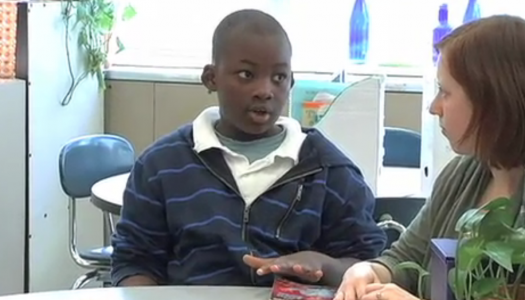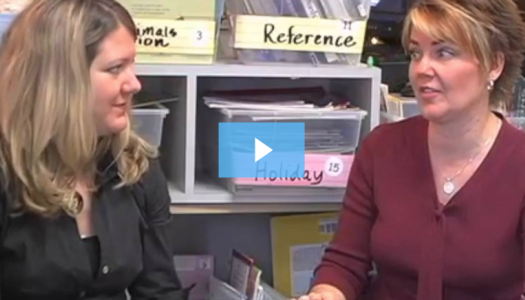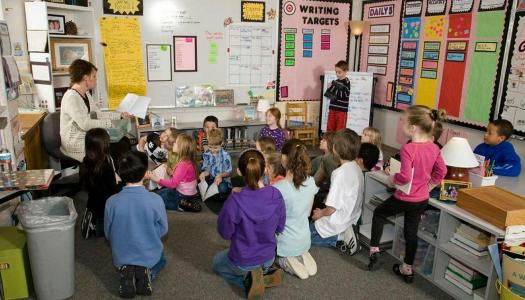Meet the Demands for Wide Reading With This Common Sense Approach
Join Our Community
Access this resource now. Get up to three resources every month for free.
Choose from thousands of articles, lessons, guides, videos, and printables.

The American obsession with sports begins early; most teachers can readily name students who live for the game. As devoted fans, some students want to read sports books and only sports books. Teachers certainly appreciate students' literary interests and respect them, but they also want children's reading to be wide and deep. After all, the Common Core State Standards for English Language Arts & Literacy in History/Social Studies, Science, and Technical Subjects K?5 offer this note on the range and content of student reading:
To build a foundation for college and career readiness, students must read widely and deeply from among a broad range of high-quality, increasingly challenging literary and informational texts (p. 10).
To meet this demand for wide and deep reading, I suggest a commonsense approach, based on the time-honored philosophy of "If you can't beat 'em, join 'em." This approach broadens reading horizons, honors choice (as well it should) and factors in good-fit books while recognizing that some students may benefit from guided choice. Here are a few ways to expand students' reading repertoires in the sports zone.
- Biography Book Club?Invite each club member to read a book of his or her choice (at the "just-right" level, of course) about a favorite sports star. Remember that some readers who struggle with self-selection may benefit from choosing among a small assortment of texts you have gathered just for them. Later, have club members share what they learned about similarities and differences in the athletes' accomplishments, challenges, personalities, etc.
- Author Studies?Dan Gutman, Mike Lupico, Matt Christopher, and Tim Green are just a few writers known for their sports fiction. Have students consult the Internet, book reviews, or library catalog to discover additional authors who commonly write about sports. Encourage children to select an author, read a couple of his or her books, and share their insights with the class. Keep in mind that your local librarian is a good source for student-friendly websites and popular authors.
- Record Breakers?Ask sports lovers to research a particular sports record of interest using almanacs, the Internet, or other research tools. Provide opportunities for readers to share their findings. This type of research promotes reading of informational text for an authentic purpose and hones investigative skills.
- Fascinating Facts?Gather students to brainstorm types of unusual sports (possibilities include fencing, curling, bobsledding, rugby, polo, dog sledding, and more). Then ask students to investigate an unusual sport that they find fascinating. Have books of various reading levels on display about these lesser-known sports to serve the range of reading abilities in your classroom. Allow readers to share their fascinating facts with the class.
- Hometown Heroes?Invite each sports lover to read about and then report on his or her favorite member of your hometown sports teams. Plan a special reading celebration in honor of the home team!
- The Poetry Team?There are poetry books about almost everything, and the topic of sports is no different! It's easy to find poems written about baseball, football, and more for your students' reading pleasure. Remember that the sports-related poems can be used for fluency practice later.
- Content-Area Links?Teach students to recognize that history and science each play an important role in sports. For example, a student who loves to read about baseball may want to research the history of the Louisville Slugger or learn about the physics of the baseball bat. Share some ideas about history/science connections to sports with students and let them select their favorite one to research.
- Sports Books Blogs?Time constraints don't allow teachers to confer with each child every day despite their best intentions. A secure student-friendly blog can be a wonderful avenue for children to exchange ideas about what they are reading with each other. If a blog isn't a possibility for your readers, consider a dialog journal where two readers can share responses to their reading the old-fashioned way?with a pencil and paper.
- Alphabet Books?These informative picture books are a terrific way to increase students' background knowledge and grow their vocabularies. Provide sports fans with ABC books of varying difficulty levels about their favorite pastimes. Ask them to share new concepts and interesting vocabulary that they learn.
- Fiction/Nonfiction Pairs?Wide, deep reading includes both informational and literary texts. What better way to build background than to pair fiction and nonfiction texts about related subjects? For example, you can recommend that a student read a fiction book featuring a favorite sport and then learn more about this particular sport via a nonfiction text. At first, prepare a few pairs for student selection; in time, readers may be able to put their own fiction/nonfiction pairings together.
- Reading Shop-a-Rama?Knowing students' reading tastes allows you to promote variety and maximize opportunities for voracious reading. Contact your local library to request bags of books and magazines. Enlist the librarians' help in finding different sports-themed materials guaranteed to attract readers on book-shopping days.
- Home Runs?Designate an area of your classroom for sports books that students consider to be home runs. Have them write the title of the book, the author, the genre, and the reason(s) why the book is a home run to pique curiosity. If possible, display the books to promote browsing (be ready to suggest alternative titles if the text is too difficult). One of the best ways to generate interest in a book is a recommendation from a friend.
- Reading Logs?Your students will enjoy keeping track of the books they have read. Instruct them to record the title and author of each book they read as well as the genre. Maintaining awareness of the different genres read is a good way to be sure that there is a lot of variety in their reading diet! Some readers may also like to create graphs featuring the numbers of books in each genre they read.
By reading widely and deeply, readers can be part of a championship team of 21st-century college-and career-ready learners!
Works Cited
National Governors Association Center for Best Practices, Council of Chief State School Officers. Common Core State Standards for English Language Arts & Literacy in History/Social Studies, Science, and Technical Subjects K?5, Washington DC. http://www.corestandards.org/assets/CCSSI_ELA%20Standards.pdf








